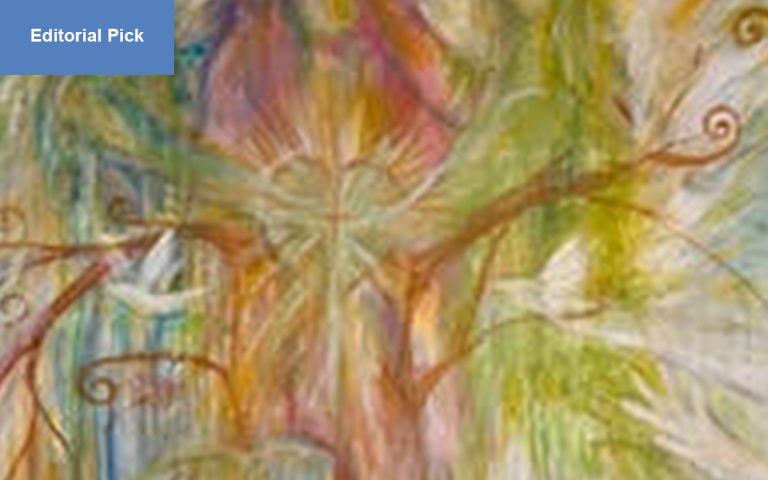Cheryl Crane-Hunter is a multifaceted artist whose work moves beyond visual beauty and into something deeper. With a foundation in art education and a lifelong reverence for the natural world, she creates works that are at once meditative and symbolic. Her pieces are not simply images of trees, oceans, or landscapes. They are invitations to slow down and reconnect with what grounds us.

For Cheryl, nature is more than subject matter. It is a partner in the creative process. Whether it is the gentle sweep of a tree branch or the layered blues of water, her paintings embody calm, healing, and reflection. But her art also carries a more profound layer—it shows nature’s ability to hold memory, pain, and transformation. Cheryl’s work reveals not only the external world but also the interior one, shaped by resilience and faith.
Gathering at the Tree of Life
One of Cheryl Crane-Hunter’s most personal works is her acrylic painting Gathering at the Tree of Life (36×48 inches). This piece stands as a symbolic testimony to her journey as a breast cancer survivor. It is not just a painting to be admired but a visual record of endurance, faith, and healing.
At the heart of the composition is the Tree of Life, a timeless emblem of growth, connection, and continuity. The tree’s presence here is not decorative. It is the anchor around which Cheryl builds her story. The title itself suggests that this is not a solitary survival—it is a gathering, a meeting point where forces of strength converge.
Cheryl places herself in the scene through the color pink, symbolizing both her own identity and the wider breast cancer survivor community. Her presence is accompanied by archangels Raphael in green and Michael in blue. These figures carry with them long-held associations: Raphael with healing, Michael with protection. Their inclusion shows the way Cheryl leans on both spiritual tradition and personal belief to give shape to her survival.
Three doves circle the scene, completing the symbolic framework. The dove, a long-standing symbol of peace and divine presence, here represents freedom and spiritual assurance. Their motion around the canvas creates a rhythm, a sense of life ongoing.
The painting is more than symbols, though—it is built with an active, almost restless surface. Cheryl uses dripped and blended acrylic paint to shape her forms. This technique mirrors the unpredictability of life and healing, where clarity emerges out of layers of motion and accident. The paint does not sit flat. It swirls, bleeds, and fuses, embodying the messiness of survival and the beauty that comes through it.
At the bottom right of the canvas lies an image of an embryo, circled and set apart. It represents beginnings—her own life, fragile yet full of potential. From there, the composition expands outward, connecting past to present, fragility to resilience. Cheryl interprets this as God’s voice: “You are healed. Now you be the healer.” It is a message of responsibility, of turning survival into a gift for others.
Taken as a whole, Gathering at the Tree of Life is not about victory alone. It is about connection: the way personal healing is tied to divine presence, to the support of unseen forces, and to the flow of life that continues through symbols and spirit. The work does not erase the struggle it refers to. Instead, it embraces it, wrapping pain in imagery that points toward transformation.
The painting also speaks to Cheryl’s broader practice. Her art consistently bridges the natural and the spiritual. Where some artists might isolate symbols, she weaves them together—angels, doves, trees, embryos, color fields—all part of the same story. She treats acrylic paint not just as a medium but as a living material that shifts and creates unexpected forms, reminding viewers that healing and meaning are never entirely in human control.
For those who encounter Gathering at the Tree of Life, the experience is both visual and emotional. The work does not shy away from the specifics of Cheryl’s story, yet it also opens space for anyone to see their own journey of survival within it. Whether through faith, nature, or community, the painting suggests that healing is collective.
Cheryl Crane-Hunter’s art is rooted in resilience. In Gathering at the Tree of Life, she offers not only her own survival but also an image of how personal struggle can be transfigured into a source of peace and renewal for others. Her canvas is both testimony and invitation—a reminder that even through pain, the natural and spiritual worlds converge to carry us forward.

